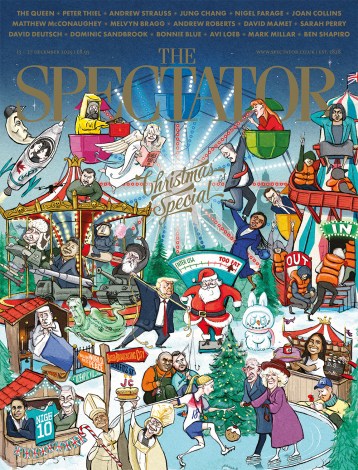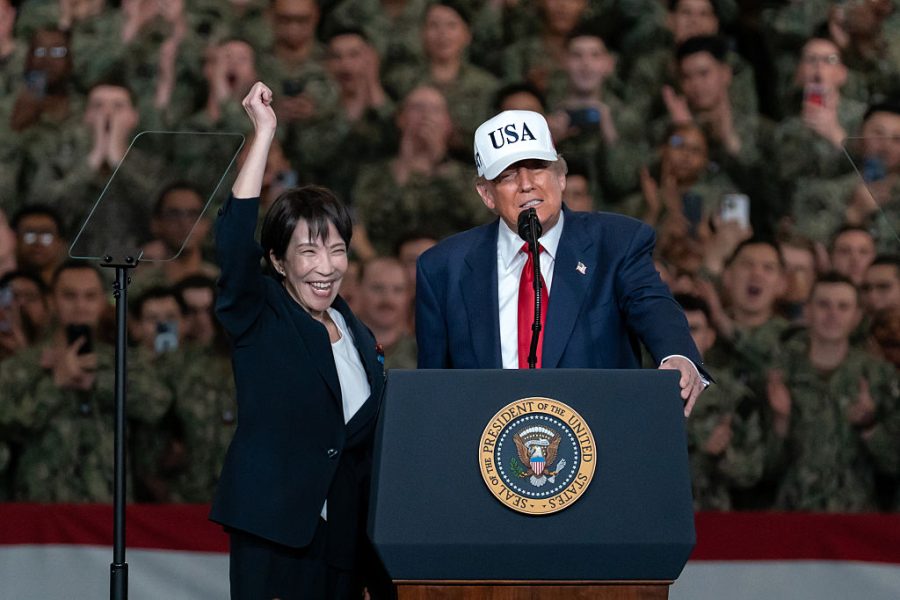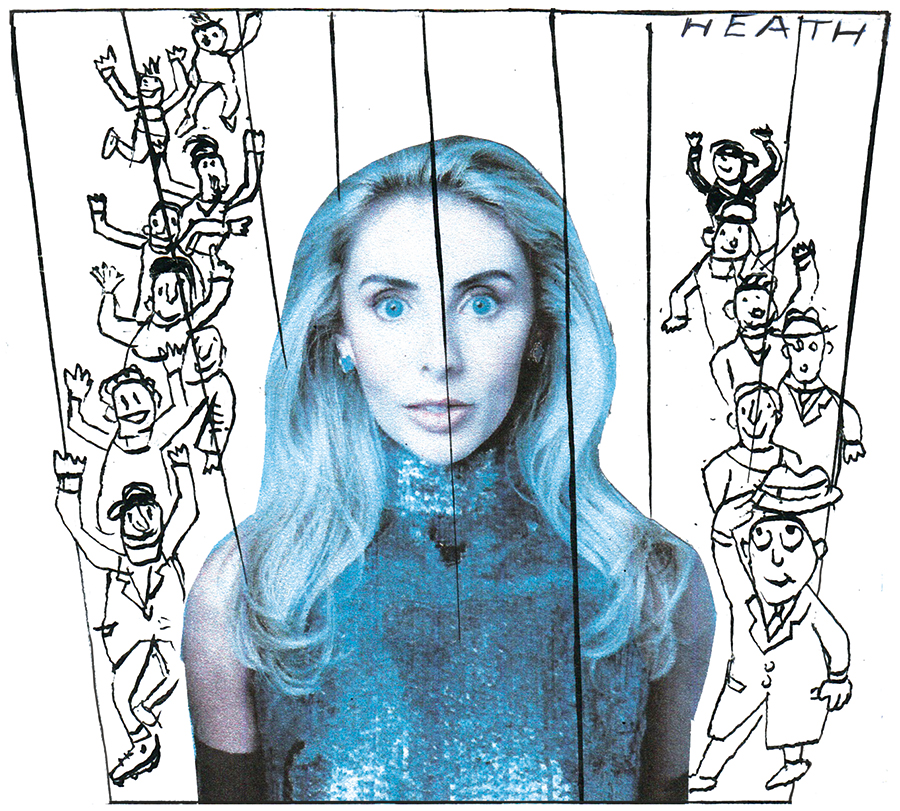‘My wonderful ally and friend’ is how Japan’s brand new, and first female, prime minister Sanae Takaichi described President Trump in her recent tweet. As has been commented in Japan, this is a bit strong given that the two have spent a total of one day together (Trump is visiting as part of a tour of South Asian). The accompanying photo shows the two in couple-y proximity inside a US army helicopter at Yokosuka naval base. Trump looks relaxed and happy. Takaichi? Positively smitten.
Could we be witnessing the emergence of a new geopolitical power couple in the mould of Thatcher and Reagan? Takaichi is known to have been inspired by the former Tory prime minister and has even taken to imitating the Iron Lady’s dress (Thatcherite blue with pearls). And Trump and Reagan have much in common, a showbiz background, charisma in spades, an appeal to blue collar workers that transcended traditional Washington politics, and a reputation for grand gestures on the international stage.
China and North Korea are surely the primary targets of this pageantry
The initial signs are promising. The two leaders have been seemingly trying to outdo each other in the lavishness of their praise for each other and their respective countries. Trump has already described Takaichi as ‘fantastic’ and ‘beautiful’ and said that ‘we have become very close friends all of a sudden’; while Takaichi has described the US/Japan relationship as being on the brink of a new ‘golden age’. She has promised to nominate Trump for the Nobel Peace prize for his ‘unprecedented historic achievements’.
The first date seems to have gone well then but can the ardour be sustained? Trump could be just, well, being Trump, love-bombing a new acquaintance into a false sense of security, and then losing interest or hitting them with 100 per cent tariffs on their core exports. Some have wondered if the visit wasn’t more in the way of a courtesy call for Trump, with the US ever mindful of how offended Japan can be if their country is snubbed (on an Asian tour in 1995 Bill Clinton skipped Japan; it still hasn’t been forgotten).
And despite the appearance of harmony, there are discordant notes. Trump’s tariffs are a running sore here even after a reduction was negotiated by Ishiba’s envoy in August. And though Trump has long urged Japan to take more responsibility for its own defence and Takaichi has promised to expedite by two years a commitment to raise spending on the military by 2 per cent, whether this will result in a meaningful strengthening of Japan’s defence capabilities, or will even happen, is not certain.
But there is little doubt that Trump and Takaichi are aligned on many issues and they certainly looked comfortable in each other’s company. Takaichi is the most conservative leader Japan has had since her mentor Shinzo Abe (a good friend of Trump) and evidence of her admiration for the MAGA movement is well established (she has talked of a ‘Japan First’ agenda). On immigration they appear of like mind. The US’s interest in Takaichi would appear genuine too: Takaichi has claimed that she was invited to meet Trump in Washington months before she became prime minister.
Trump’s short visit was carefully choreographed. For the banquet dinner, American rice was served, a remarkable compliment given how proud the Japanese are of their staple. As for images, along with the cute helicopter snap and footage of Trump meeting Emperor Naruhito, there was a massive ‘PEACE THROUGH STRENGTH’ banner flanked by the flags of both nations at the US base as a backdrop to where the two leaders gave their speeches to the troops.
The key question is who is the intended audience for this pageantry? For Takaichi, whose position as prime minister was in some doubt right up until she managed to seal a coalition deal with the Japan Innovation party on 20 October, she will no doubt be hoping that her party will be suitably impressed by her rapid entry into Trump’s affections to give her more than the customary 12 months or so that LDP (Liberal Democratic party) prime ministers have managed of late.
But China and North Korea are surely the primary targets. Takaichi and Trump have signed a deal to secure the supply of rare earth minerals, a clear rebuke to Beijing which recently tightened export controls on these all-important commodities. And the visit to the military base and the explicit peace banner are likely signals to the Chinese that any more rumblings and manoeuvring over Taiwan or missile ‘testing’ from Pyongyang (yesterday, the two leaders met with families of those abducted by North Korea in the 70s and 80s) will be jointly, robustly opposed.
Thatcher and Reagan had a common enemy in the Soviet Union, which helped cement their relationship and unite them in a common resolve. Similarly, the threat posed by China and North Korea could be the fortifying element and preservative in the Trump-Takaichi partnership.
Trump meets Xi Jinping in Seoul this week. Having the appearance of a solid alliance with Japan’s resolutely Sinosceptic new prime minister ought to put a spring in his step and may be useful leverage for the great dealmaker.








Comments